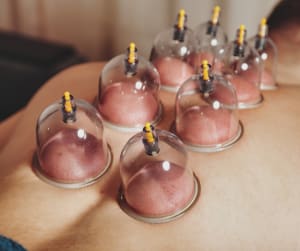
In the world of rehabilitative chiropractic care, two time-tested techniques are gaining renewed attention for their profound effects on movement, recovery, and overall well-being: cupping therapy and dry needling. Both therapies complement chiropractic adjustments, and when integrated thoughtfully, they can unlock better performance, reduce pain, and support long-term functional health.
What Is Cupping Therapy?
Cupping therapy is an ancient healing practice rooted in Traditional Chinese Medicine (TCM). It involves the application of suction cups on the skin to create negative pressure, drawing the skin, fascia, and muscle tissue upward. This gentle lifting effect helps:
Increase blood circulation to affected areas
Loosen tight muscles and fascia
Promote lymphatic drainage
Accelerate detoxification and healing
In a rehabilitative chiropractic setting, cupping is particularly effective for addressing myofascial restrictions, chronic tension, and postural imbalances that can limit mobility. Many patients report significant relief in areas like the neck, shoulders, lower back, and hips after just a few treatments.
What Is Dry Needling?
Unlike acupuncture, which is based on energy meridians, dry needling is a modern, evidence-based technique grounded in Western medicine. It targets myofascial trigger points—commonly known as "knots"—that cause pain, stiffness, and decreased performance.
Using a thin, monofilament needle, chiropractors can:
Interrupt pain signals at the neuromuscular level
Stimulate tissue regeneration and healing
Reduce muscle tension and spasm
Improve joint range of motion
Dry needling is especially effective in treating conditions such as sciatica, shoulder impingement, plantar fasciitis, and tendonitis—issues frequently seen in athletes and active individuals.
Functional Benefits: More Than Just Pain Relief
Cupping and dry needling go beyond symptom relief—they directly support functional movement patterns by:
Restoring muscle balance: Releasing overactive or inhibited muscles to re-establish proper neuromuscular firing sequences.
Enhancing mobility: By freeing up fascial adhesions and improving joint play, these techniques help restore natural, efficient movement.
Reducing compensation: When painful areas are addressed and trigger points are eliminated, the body no longer needs to "cheat" or overuse other areas, reducing injury risk.
Accelerating post-treatment recovery: Patients often experience faster relief following chiropractic adjustments when these therapies are included, allowing them to get back to training or everyday life more quickly.
Integrating Into a Wellness Plan
When integrated with chiropractic adjustments, movement therapy, and strength work, cupping and dry needling can become essential tools for:
Athletes optimizing performance
Clients recovering from surgery or injury
Desk-bound professionals combating postural fatigue
Anyone pursuing long-term wellness and resilience
By focusing on the root causes of dysfunction—not just symptoms—these techniques promote better alignment, better movement, and better living.

